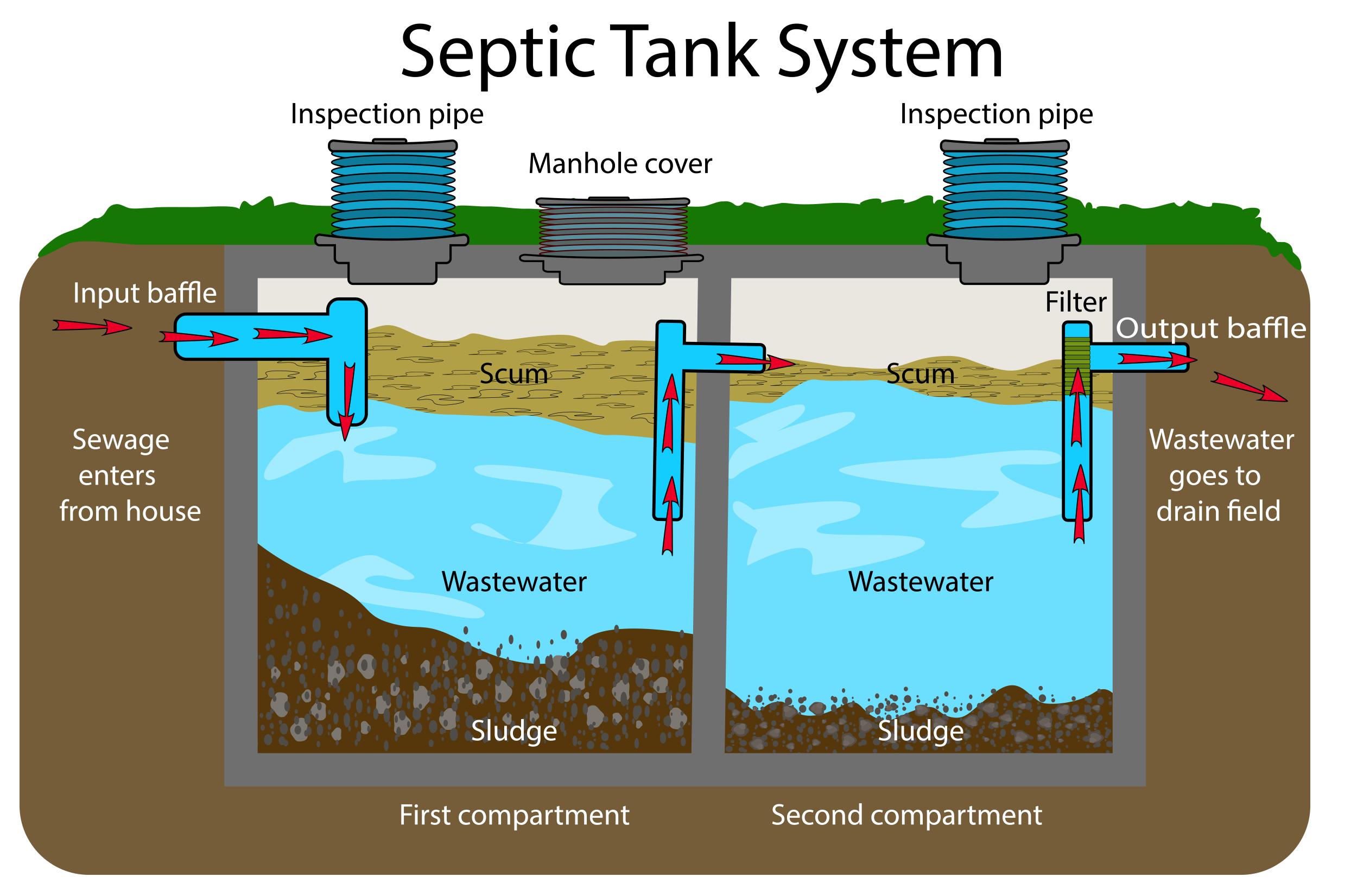Septic Tank Safety - How To Maintain A Septic Tank8 January 2017 | Admin 
Most people do not stop to think about the wastewater while bathing, doing dishes or using washing machines. Once it goes down the drain it is no longer of concern to anyone. Owners of septic tanks must adhere to guidelines issued by the authorities as per the water related legislation and to escape penalties and to stop polluting the environment, it is the responsibility of the user to maintain and operate the system in a manner that safely and efficiently treats the sewage. Sewage that goes down the drains into the septic tanks is not just organic waste flushed down the toilets. Injudicious use of these chemicals could prove detrimental to the functioning of the septic system. How does a septic tank work?Wastewater enters the tank through an inlet pipe. Solid waste settles at the bottom of the tank while the water flows above. When another surge of wastewater enters, the tank releases the content that has been there prior and into the drain field. If there is clogging’s around the pipes, the whole process could affect the sewage treatment. The tank may refuse to hold incoming wastewater and any excess water that goes into the drain field could cause overflow problems. 

With failed wastewater systems these can cause unmanageable situations but with a few simple precautions and pre-emptive steps could save the owners trouble as well as valuable time and money. Steps to takeBe mindful about what is put into your septic tank system. The biological balance within the tank can easily be upset. The below activities if used may alter the ecosystem of the tank and kill off the favourable bacteria that work towards efficient break down of the effluent. - Excessive amounts of household chemicals is a no – you can use normal amounts of household bleaches, drain cleaners, detergents and other household chemicals that won’t upset the bacterial action in your septic tank. Paint thinners or cleaning water for latex paintbrushes should not be disposed down your drains.
- Grease, cooking fats, coffee grounds and all non-biodegradable materials should not go down the drains as these may plug the pipes or build up in your septic tank and plug the inlet. Rather than using powder dishwater soaps, use liquid or gel due to some powders containing phosphates.
- Septic tanks should be emptied as part of the regular maintenance, how often depends on the size of the tank, volume of wastewater and how many solids go into it. A rule of thumb is at least once a year for the average domestic tank
When foul odour, slow drains and slower flushing incur, these are signs that your septic tank needs to be pumped. When you clean and pump your septic tank, you not only remove waste but also the good bacteria that process the waste material. To avoid removing the good bacteria you can purchase Hydra Bio Start for Septic Tanks/Sewage Plants. 
Hydra Bio Start contains 12 good bacteria strains, which will improve the efficiency of small and large septic tanks and sewage plants. Hydra Bio Start is a dual action product that contains a slow release oxygen agent which boosts the oxygen levels in the septic tank helping the good bacteria to rapidly reproduce. If excessive use of bleach is used the Hydra Bio Start will restore the necessary biological activity aswell as speed up the process of degrading organic materials. This same oxidiser also acts as a disinfectant when spread over surface spillages on the ground. It is Eco friendly, completely biodegradable and easy to use. Simply add directly to the septic tank and the good microbial population will rapidly colonise the system with results seen in 48 hours. Prices start from £29.94 
For our full range of products please see below and click for more information.
| 
